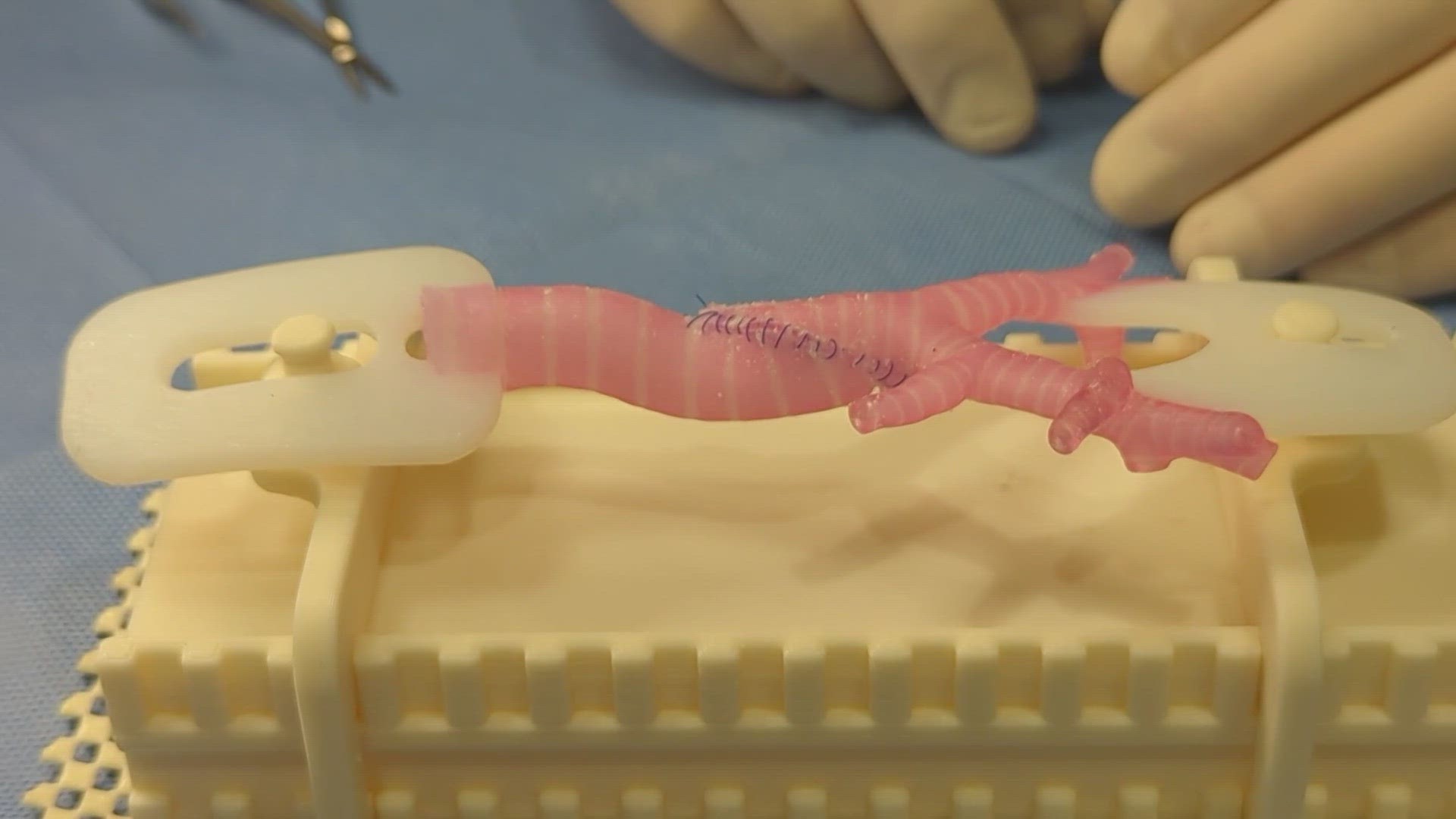SEATTLE — Surgeons utilizing 3D printing technology to train and practice for certain complex surgeries are taking their talents and knowledge of the process, abroad.
3D printing is used to replicate pretty much anything nowadays, including models of human body parts.
At Seattle Children's Innovation Lab, one surgical team has been using 3D models of children's trachea as practice before the actual procedure.
The trachea is the windpipe that connects the voice box, to the lungs. And operating on this delicate part of the body can be tricky.
Dr. Kaalan Johnson is a pediatric ear nose, and throat surgeon at Seattle Children's, specializing in airway procedures for kids who have difficulty breathing and swallowing.
Among those procedures is what's known as a slide tracheoplasty.
The 3D models allow surgeons to rehearse the procedure with a life-size patient model, before the actual surgery on the child.
It starts with a CT scan of the child or toddler's trachea.
"Then we'll take the set of images and what we'll first do is we'll first make a model of the inner part, the part that you can't see, 'the air.' Then we have quite a step-by-step process where we can talk to doctors like Dr. Johnson to find out exactly how many cartilage rings there are," said Seth Friedman.
Friedman is a scientist and manager of Innovation Imaging and Simulation modeling at Seattle Children's. He and Dr. Johnson showed HealthLink an inside look at the printing process at the hospital's Innovation Lab.
Once printed, the replica is clamped on a small, box-like structure that surgeons will use for rehearsals.
"We can actually decide how we want to make this cut and transect the airway at the right spot," Johnson said.
Johnson and Friedman said these models provide much-needed peace of mind to the patient.
"Surgeons really like to practice. So they are more like the concert violinist, and this is a patient that they actually want to practice their craft on," Friedman said.
Such tools are now being used overseas. Johnson and his team have traveled to South America to teach 3D printing models for tracheoplasty.
Johnson said it makes sense to practice, particularly for newer surgeon trainees.
"So this allows a much more equitable distribution of experience getting prepared for not just the procedure itself but also patient-specific preparation for surgeries," Johnson said.
Johnson is set to travel to Santiago, Chile, next year to continue teaching the tracheoplasty training.
3D printing technology helps surgeons rehearse complex surgeries: HealthLink
Seattle Children's Innovation Lab prints 3D models of children's trachea to use for surgery training

